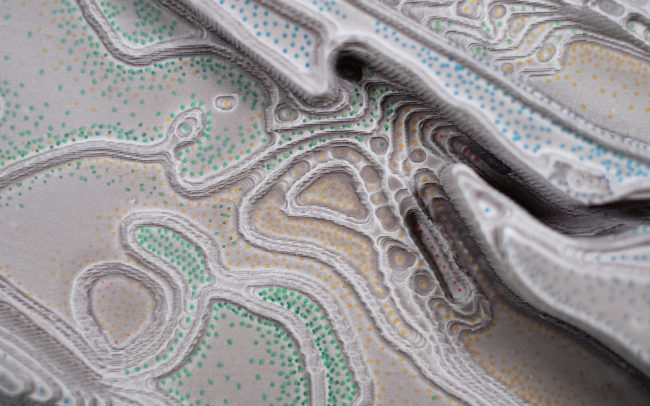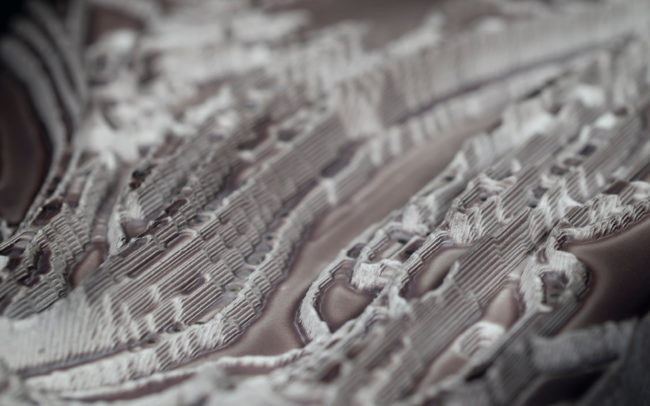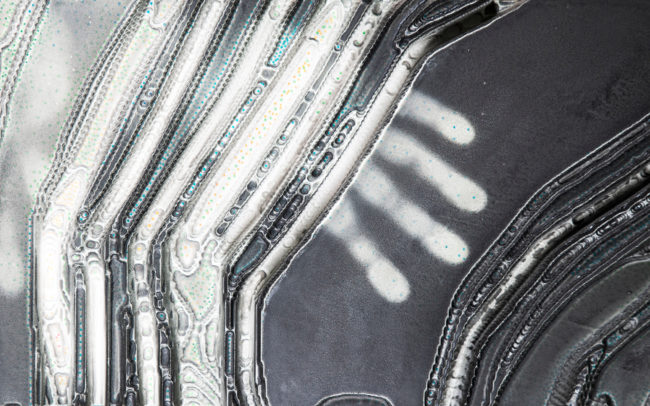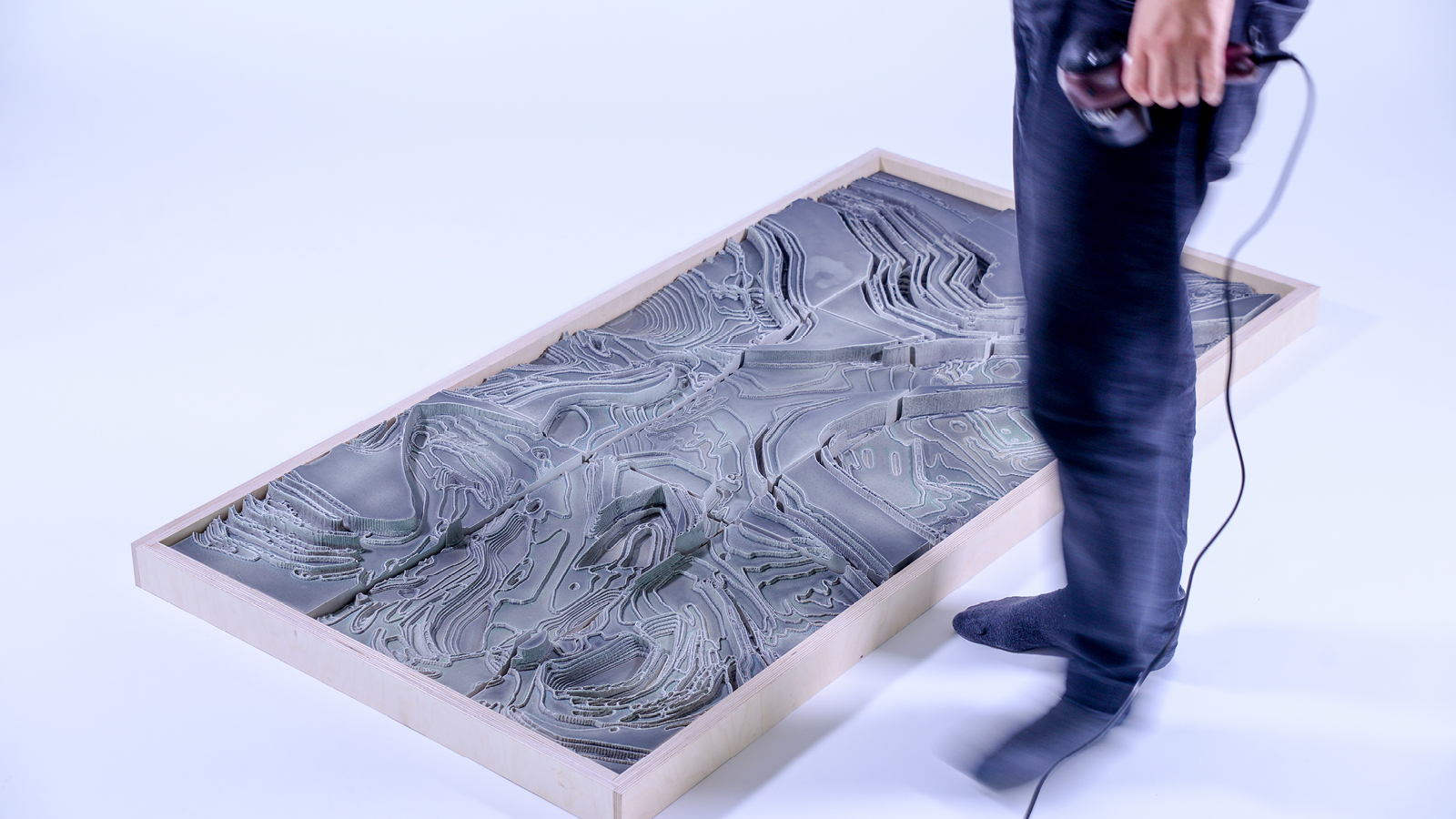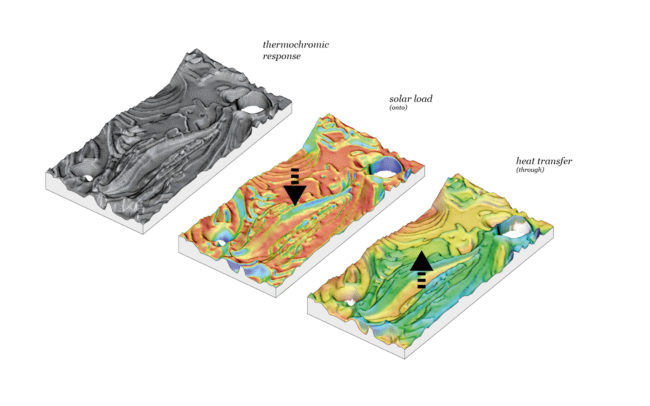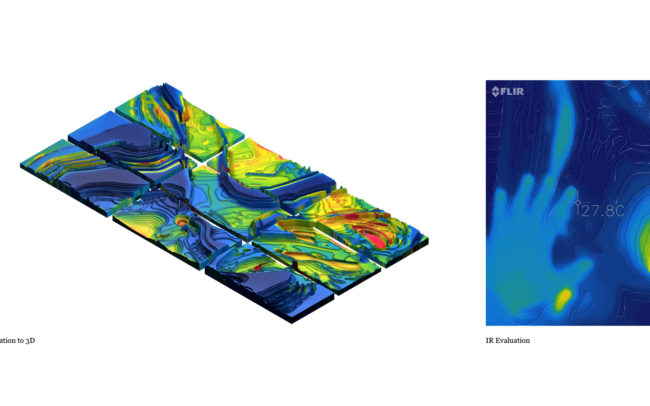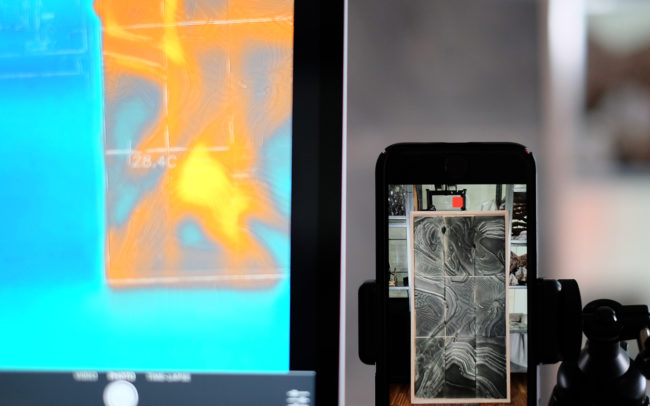The project aims to visualise conventionally invisible parameters of our environment on surfaces. Each panel has a unique geometry that leads to the emergence of distinct patterns once the surface temperature changes. This is made possible by informing the panels’ design through digital simulations and fabrication. The thermochromic coating incrementally reveals colourful layers beneath when exposed to temperatures above 27°C. This is the threshold value above which humans generally experience discomfort. Consequently, the project creates a communication interface between the built and the natural environment through material intelligence and design.


